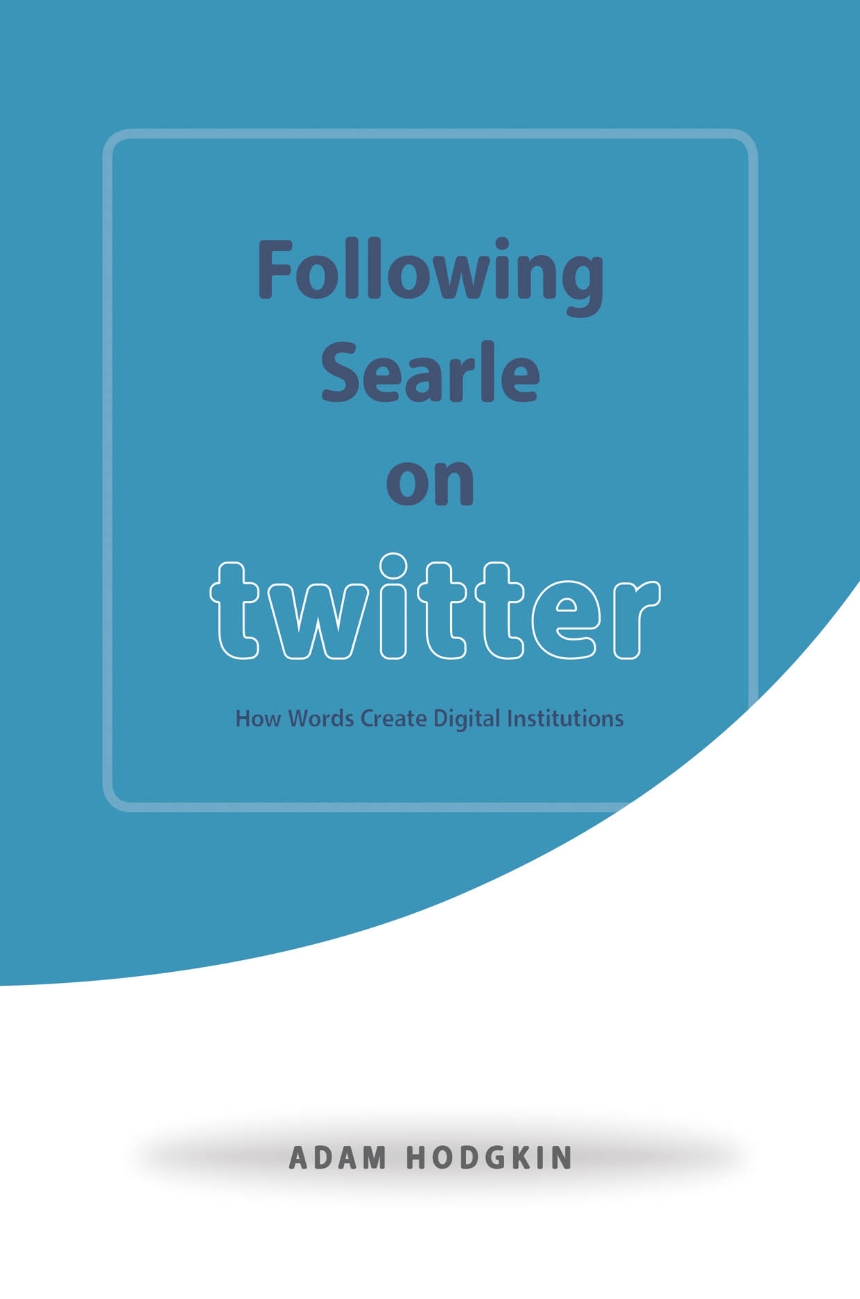Following Searle on Twitter
How Words Create Digital Institutions
Twitter allows us to build communities, track celebrities, raise our social profile, and promote a personal brand. Adam Hodgkin thinks Twitter is much more than a mere social media tool—it is a terrain ripe for a conceptual and theoretical analysis of our use of digital language. In Following Searle on Twitter, Hodgkin takes John Searle’s theory of speech acts as Status Function Declarations (SFDs)—speech acts that fulfill their meaning by saying the right words in the right context—as a probe for understanding Twitter’s institutional structure and the still-developing toolset that it provides for its members. He argues that Twitter is an institution built, constituted, and evolving through the use of SFDs. Searle’s speech act theories provide a framework for illuminating how Twitter membership arises, how users of Twitter relate to each other by following, and how increasingly complex content is conveyed with tweets. Using this framework, Hodgkin places language, action, intention, and responsibility at the core of the digital culture and the digital institutions that we are constructing.
Combining theoretical perspective with a down-to-earth exposition of present-day digital institutions, Following Searle on Twitter explores how all of our interactions with these emerging institutions are deeply rooted in language, and are the true foundation of social media and contemporary institutions.
Combining theoretical perspective with a down-to-earth exposition of present-day digital institutions, Following Searle on Twitter explores how all of our interactions with these emerging institutions are deeply rooted in language, and are the true foundation of social media and contemporary institutions.
224 pages | 1 halftone, 1 table | 6 x 9 | © 2017
Language and Linguistics: General Language and Linguistics, Philosophy of Language
Philosophy: General Philosophy
Reviews
Table of Contents
Preface
1 Philosophical Tweets
2 What Twitter Really Is
3 “Following” Makes Twitter’s Social Structure
4 “Almost Everything You See Today in Twitter Was Invented by Our Users”
5 Referential Complications
6 Twitter’s Content and Twitter’s Context
7 Twitter’s Constitution and Twitter’s Shape
8 Digital Institutions
9 Digital Language
10 A Natural History of Digital Institutions
11 Since We Make These Digital Institutions . . .
Notes
Index
1 Philosophical Tweets
2 What Twitter Really Is
3 “Following” Makes Twitter’s Social Structure
4 “Almost Everything You See Today in Twitter Was Invented by Our Users”
5 Referential Complications
6 Twitter’s Content and Twitter’s Context
7 Twitter’s Constitution and Twitter’s Shape
8 Digital Institutions
9 Digital Language
10 A Natural History of Digital Institutions
11 Since We Make These Digital Institutions . . .
Notes
Index
